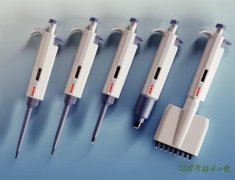LB medium is a staple in virtually every lab. It’s commonly used to propagate E. coli, and as such will be used frequently by any lab that does cloning. Chances are, LB broth or plates were one of the first things you learned to make as a newbie in the lab. Here are a few interesting facts you might not know about LB:
References
1. Bertani, G., Lysogeny at Mid-Twentieth Century: P1, P2, and Other Experimental Systems.Journal of Bacteriology, 2004. 186(3): p. 595-600.
2. Sezonov, G., D. Joseleau-Petit, and R. D’Ari, Escherichia coli physiology in Luria-Bertani broth.Journal of Bacteriology, 2007. 189(23): p. 8746-9.
3. Nikaido, H. (2009). The Limitations of LB Medium. Small things considered – The Microbe Blog. ASM. http://schaechter.asmblog.org/schaechter/2009/11/the-limitations-of-lb-medium.html
Resource:http://bitesizebio.com/articles/five-things-you-might-not-know-about-lb/

环己烷(CYH)、环己酮(CYC)、二丙酮醇(DAA)、四氢呋喃(THF)、二甲基甲酰胺(DMF)、二甲亚砜(DMSO)、甲基丙烯酸甲酯(MMA). (A)酯类 ESTERS 乙酸甲酯 MA...
1 什么是扫描电子显微镜(SEM) Scanning Electron Microscope(SEM)扫描型电子显微镜是由真空系统、 高压电源、高灵敏度增幅器获取样品表面图像的...

Two-dimensional thin-layer chromatography in the analysis of secondary plant metabolites ukas z Ciela , Monika Waksmundzka-H ajnos , Drugs, derived from medicinal plants, have been ...

量程的调节 调节量程时,如果要从大体积调为小体积,则按照正常的调节方法,逆时针旋转旋钮即可;但如果要从小体积调为大体积时,则...